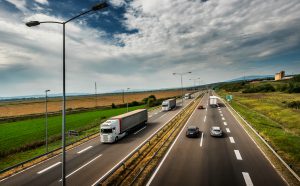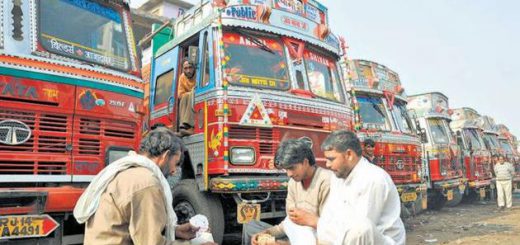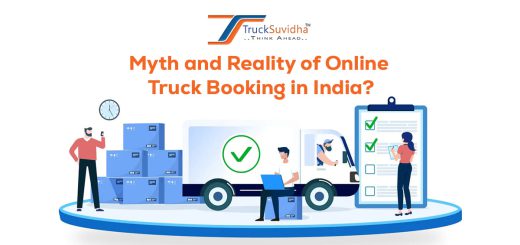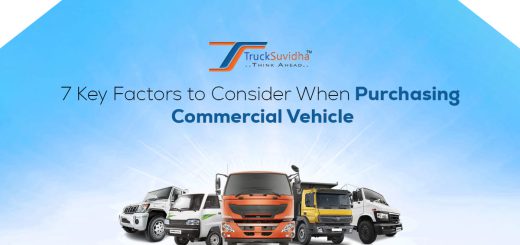Focus on creating infrastructure that is safe, accessible for all: Nitin Gadkari
Gadkari acknowledged the dichotomy between building super-fast roads to bring cities closer in the country and ensuring safety of passengers as well as pedestrians.
Union minister for road transport and highways Nitin Gadkari has shed light on the challenges his ministry faces over enforcement of traffic rules, which falls under the purview of the states. Following the recent death of former Tata Sons chairperson Cyrus Mistry in a car accident on the Ahmedabad-Mumbai highway, Gadkari also acknowledged the dichotomy between building super-fast roads to bring cities closer in the country and ensuring safety of passengers as well as pedestrians.
In an interview to Hindustan Times, talks about road safety. He also listed out the expressways that would be ready in a year from now and talked about the government’s plan to reduce vehicular traffic by providing cheaper environment-friendly public transport.
Excerpts from the interview
You say that highways and expressways constitute only 1-2% of all roads in India, but nearly 60% of all road accident deaths in 2021 have occurred on national highways, state highways and expressways. Why is that so and what are you doing to better the situation?
See roads are a vital aspect of an economy. Better the connectivity, more the employment, more the business and a prosperous economy. The focus should be on creating infrastructure that is safe and accessible for all. After this unfortunate accident which killed my dear friend Cyrus Mistry, I also took up the issue of reviewing speed limits in the meeting of the Transport Development Council which happened in Bengaluru on Friday (September 9).
We have single lane, two lane, four lane, six lane, eight lane roads and now we also have four lane, six lane and even 12-lane access-controlled roads. The speed limits are very arbitrary and often are not set with a scientific approach. The plan is to set speed limits for all these categories of roads in consultation with states. Because notifying speed limits is a state subject, we cannot do it on our own.
Similarly, enforcing traffic rules is a state subject. Not wearing seat belts even in the rear seat is already a traffic offence. But, traffic police of any state hardly prosecute people for that. But now I am trying to work out a way in which the Centre can collaborate and take stock of traffic rule enforcement by the state governments. At least in our highways and expressways, I am going to expand the scope of the intelligent traffic management system (ITMS) to automatically detect and challan vehicles if a passenger inside is not found wearing a seatbelt.

As you know, I have already ordered making of seat belt alarms mandatory for rear seats in all vehicles as well.
Also, the Ahmedabad-Mumbai highway where the accident happened is now overcrowded. The Delhi Mumbai expressway will be a 12-lane access-controlled corridor which is coming up and it will take significant load off from the Ahmedabad-Mumbai highway.
I am also pushing for changing the type of horns to something soothing, say a flute or a mouth organ.
But experts have said that may not be feasible because horns are set as per international standards and it must be heard in the ambient environment of a road or a traffic junction…
There is a solution for everything. If not for musical instruments, maybe we can reduce the decibel level of the horn to 70 and limit the duration of a single horn. I am not in favour of the constant honking where people just keep pressing the horn. Sleep detection and alarm systems in cars work that way, they don’t honk to wake up the driver.
Implementation of Bharat NCAP (new car assessment program) and the rule for 6 airbags in all vehicles is running behind schedule. What is the reason?
Standards for Bharat NCAP have been made. With this, cars will start getting star ratings in India enabling manufacturers to strive for building safer cars and people to make informed choices while buying a car. Within a year it will be implemented.
On the airbag regulation, that too will be implemented soon. In a month or two hopefully.
Your ministry is going equally big on ropeways and about 165 such projects have already been approved. But even there we saw the ropeway accident in Jharkhand’s Deoghar in April this year which turned out to be a challenging rescue operation killing two people. Has the government formulated any uniform standard or safety parameter for ropeways?
The ropeway in Jharkhand was old and its design was such that people faced a lot of difficulty in the rescue operation. Yes, now I can say that we have prepared a set of international standards and parameters for which I even sent a team to Europe to study their models and technology. So, all the ropeways that will come up in India will be of European or American standards. Safety will be the top priority. It will have evacuation protocols laid down. The ropeway system itself will have multiple backups.
You have frequently talked about multiple modes of public transportation. Could you list the projects that you’re currently monitoring?
Our plan is not just limited to ropeway, cable car and funicular railways. We are also planning to build a skybus system between Delhi’s Dhaula Kuan and Haryana’s Manesar that will carry 200 people at a time.
The plan is to decongest roads by creating multiple transport mediums that are both economically viable and are also environment-friendly. We are also working on introducing trolleybuses that run on cable, it carries 88 people at a time and has lower capital cost than even an electric bus. A 50-seater electric bus that runs on lithium-ion battery costs ₹1.25 crore, this trolley bus costs ₹60 lakh. Like this, we have to think of cheaper and yet comfortable transport solutions because our country is poor and the paying capacity of the majority population is fairly low.
With the same intention of providing cheaper transportation solutions, we are also working hard to introduce alternative fuel options such as electricity, green hydrogen, ethanol, methanol, bio-diesel, LNG, bio-LNG and bio-CNG. I don’t think that the day is far behind when our farmers will also become producers of energy.
All this will also reduce pollution.
Which are the road projects that will be completed in a year from now?
A: In one year, India will develop by leaps and bounds in terms of road infrastructure. People will be able to travel from Delhi-Dehradun in 2hours, Delhi-Chandigarh 2.5hours, Delhi-Haridwar 2hours, Delhi-Jaipur 2hours, Delhi-Amritsar 4hours, Delhi-Katra 6hours, Delhi-Srinagar 8hours, Delhi-Mumbai-12hours, Chennai to Bengaluru in 2hours and Delhi-Mumbai 12hours.
We are making 26 green expressways. Logistic costs will be reduced with all this. Currently, logistic costs in India are as high as 16%. In China it is 8-10%, European countries have 12%. We want to reduce logistic costs by 6% at least, with which our exports and employment potential will increase.
We have already approved 35 multimodal logistic parks (MMLPs) and many more are in the pipeline. We will be spending ₹200,000 crore on MMLPs alone. We are making 650 roadside amenities along our highways and expressways. Many of these wayside amenities will have heliports and hospitals. If there’s an accident, transportation of organs can be done by air using these facilities.
Now, we have also made 26 airstrip-cum-roads and tunnels worth another ₹200,000 crore so as to avoid accidents in hilly areas.
Talking about tunnels, in May this year, the Ramban tunnel collapse incident killed 10 labourers. The twin-tube tunnel which will have a four-lane road corridor from Digdole to Panthyal on the Jammu-Srinagar highway will be of strategic importance, but has there been any learnings from such accidents?
The problem in Kashmir is that there is no black rock. The earth strata there are such that if you hit something, shooting stones and debris fall from above. That was an accident. We are trying to take preventive steps and are also bringing new technology. But the strata there are very fragile. It is one of our most difficult projects so far.
Another challenging project is executing the country’s first underwater road-cum-rail in the mighty Brahmaputra River in Assam. That is also a technology heavy project which we are executing along with the BRO and railway ministry.
MoRTH recently came up with regulations for battery standards in electric vehicles (EVs). But nothing on the penalties to be imposed on erring manufacturers has been made public. Why so?
Whenever there is a new product in the market, there are always teething problems. We cannot even blame the manufacturers much because India had set no standards for batteries in EVs only. Now we have issued the regulations for batteries and if any manufacturer is found erring on the same, strict action will be taken. If we start penalising in a big way from now itself then nobody will produce EVs only.
On September 28, I will be launching the country’s first flex fuel engine car. It will run 100% on bio-ethanol. Soon in a few years from now, we will have dedicated stations for ethanol. Petrol is ₹96, ethanol is ₹62 per litre and has the same calorific value and is environmentally friendly.
Is Tesla’s chapter in India over?
No comments. They should come here, manufacture here and sell their cars. All giant automakers of the world are now manufacturing in India. I have the vision of taking India’s automobile industry from ₹7.5lakh crore to ₹15lakh crore. Whosoever wants to come and manufacture automobiles here, we will give them all a red-carpet welcome.
Read more at-https://shorturl.at/cqyBZ




Recent Comments